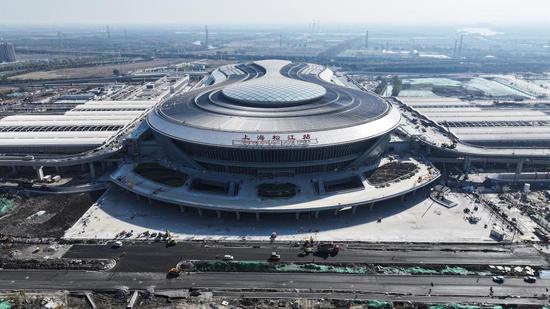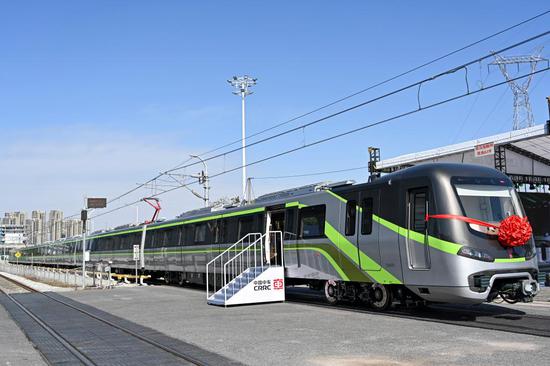By Chen Tianhao, Li Jinlei, Gong Hongyu
(ECNS) -- The Central Economic Work Conference recently summarized China’s economic work in 2024, analyzed the current economic situation and arranged the economic work for 2025. As the global economic recovery enters a critical phase, economies are encountering new opportunities for collaboration in areas such as digital transformation, green development, and supply chain optimization. At the same time, intensifying international geopolitical conflicts have introduced numerous uncertainties and challenges, underscoring the growing importance of strengthening regional cooperation and dialogue.
In the latest W.E. Talk, Zhang Yansheng, researcher of the Chinese Academy of Macroeconomic Research, pointed out that China's strategy to boost domestic demand, promote high-level opening-up, and accelerate the development of new quality productive forces will profoundly reshape its role and position in the world and the Asia-Pacific region.
Meanwhile, Deborah Elms, head of Trade Policy at Hinrich Foundation, noted that China has a lot to say in areas of climate change, green technologies, green growth etc., which are particularly important to not only China but the entire Asia-Pacific region.
China’s shifting role amid chances and challenges in global trade
Zhang said that China’s proposals including the Belt and Road Initiative (BRI) and China International Import Expo have demonstrated China’s role in international economic governance.
China has invested in hydropower stations in Cambodia, enabling locals to use secure, stable and clean electric power. In addition, China has also participated in Chile’s first high-voltage direct current transmission line, helping the country’s green development.
Raising the APEC mechanism as an example, Elms said that over the past 30 years, APEC has been upholding the importance of open markets, cooperation, integration, free trade, free investment, and movement of people. “But now there is less confidence that a win-win outcome can be created,” she noted, adding that some countries have adopted measures for domestic protection, which is “stymieing efforts of organizations like APEC”.
Zhang added that with U.S. President-elect Donald Trump coming into office in 2025, global trade and investment may enter a period of deceleration. De-globalization, driven by ideology and geopolitics, could emerge as a prevailing trend. This shift poses unprecedented challenges to the Asia-Pacific region, which is centered on the principle of open regionalism.
Despite the worries, Zhang also stressed that the Fourth Industrial Revolution brings enormous opportunities for the Asia-Pacific region, accelerating innovation, digital, and green transformation, and it will propel the region toward higher-quality development. Therefore, Zhang thinks that Asia-Pacific countries must seize the opportunities brought by this wave of industrial revolution, overcome current challenges, and work toward a more prosperous and sustainable future.
According to Zhang, China's role is shifting from being a participant in the global supply chain to becoming a contributor. In 2023, China’s 22 Pilot Free Trade Zones (PFTZs) achieved a total import and export volume of 7.67 trillion yuan, a year-on-year increase of 2.7%, accounting for 18.4% of the country's total trade. “China’s strategies of expanding domestic demand, promoting high-level openness, and accelerating the development of new quality productive forces not only support China’s balanced growth of its domestic economy but inject new momentum into global economic growth,” according to Zhang.
A critical way of regional development
Elms further elaborated that dialogue and transparency are key to eliminating misunderstandings and easing tensions, and China has been playing a pivotal role in this regard. “I was delighted to see that China has referred a case against the European Union on electric vehicles to the World Trade Organization,” Elms took an example, “because that's using the existing mechanisms that we have in order to have a very difficult set of conversations.”
In the face of the potentially ongoing trends of protectionism, geopolitical tensions, and great power rivalry, Zhang believes that it is essential to prepare for a prolonged struggle. In this process, cultural exchanges and mutual understanding among people are especially important. Therefore, measures including promoting tariff reductions, visa openness, and the normalization of flights will help foster mutual understanding and achieve win-win cooperation.
“Countries in the Asia-Pacific region should strengthen dialogue and coordination, striving to eliminate the digital divide, digital protectionism, and digital geopolitics, in order to promote shared development and prosperity,” Zhang pointed out.
“Openness+Green+Multilateralism”, the new paradigm of Asia-Pacific cooperation
Both experts stressed that the Asia-Pacific region needs to find development momentum through openness and cooperation. Zhang said that the green transition needs to be gradual, with a priority on developing clean energy and properly addressing the distribution of interests during the transformation process. Besides, China-U.S. relations are crucial for the advancement of multilateralism. Both sides need to adopt a global perspective and seek greater consensus in areas such as promoting investment facilitation, technological innovation, and industrial chain cooperation.
Elms called on APEC members to adhere to rule-based approaches and transparency in the current situation, emphasizing the importance of sharing the logic and objectives behind each party's measures through dialogue to reduce guessing and misunderstandings.
“We actually need APEC to be functioning as an incubator of ideas in promoting green development and regional coordination,” noted Elms. She also stressed that APEC members should focus on green technologies and climate change, and China should leverage its leadership in green technology, sustainable development, and other fields to drive the global economy toward open, green, and multilateral development.


















































 京公网安备 11010202009201号
京公网安备 11010202009201号